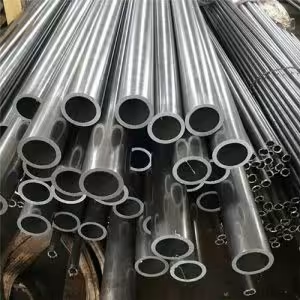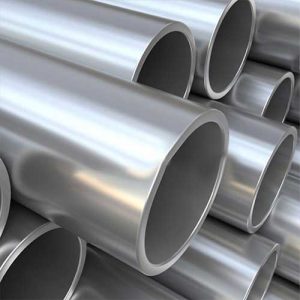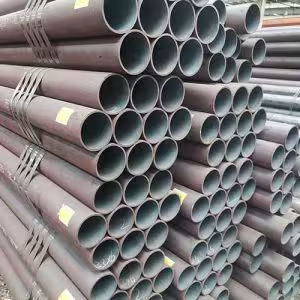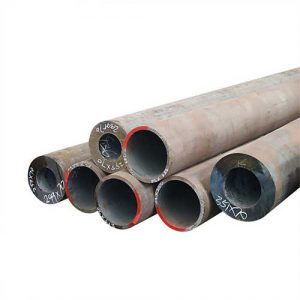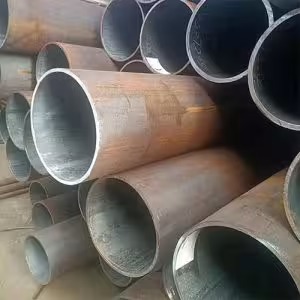Welcome to My Blog!
Before we dive into the content, I’d love for you to join me on my social media platforms where I share more insights, engage with the community, and post updates. Here’s how you can connect with me:
Facebook:https://www.facebook.com/profile.php?id=61565500692293
Now, let’s get started on our journey together. I hope you find the content here insightful, engaging, and valuable.
Table of Contents
Introduction
Seamless steel pipes are the backbone of many industries, from construction and oil & gas to automotive and aerospace. Their seamless design ensures a strong and reliable structure, making them ideal for applications where safety and durability are paramount. This comprehensive guide delves into the manufacturing process behind seamless steel pipes, exploring the techniques, materials, and factors that contribute to their superior quality and performance.
Understanding Seamless Steel Pipes

Definition and Importance
Seamless steel pipes are tubular products made from solid steel, without any welds or seams. They are valued for their strength, corrosion resistance, and ability to withstand high pressures and temperatures. The seamless nature of these pipes reduces the risk of leaks and failures, making them a preferred choice in critical applications.
Materials Used
The primary material used in the production of seamless steel pipes is carbon steel or low-alloy steel. These materials are chosen for their strength, ductility, and weldability, which are essential properties for pipe manufacturing.
Advantages Over Welded Pipes
Seamless steel pipes offer several advantages over welded pipes, including uniformity in material properties, better resistance to corrosion and pressure, and a longer service life.
Manufacturing Techniques for Seamless Steel Pipes
Piercing Process
The manufacturing of seamless steel pipes begins with the piercing process, where a solid billet of steel is heated and pierced to create a hollow shell. This process can be done using either a plug mill or a mandrel mill.
Pilgering Process
After piercing, the hollow shell is then subjected to the pilgering process, where it is rolled and shaped into a pipe. The pilgering mill uses a series of dies to reduce the wall thickness and increase the length of the pipe, achieving the desired dimensions.
Heat Treatment
Heat treatment is a critical step in the manufacturing process, where the pipes are heated and then cooled to achieve the desired mechanical properties. This process can involve normalization, annealing, or quenching and tempering, depending on the required properties of the final product.
Inspection and Quality Control
Each stage of the manufacturing process is accompanied by rigorous inspection and quality control measures to ensure that the pipes meet strict industry standards and specifications.
Applications of Seamless Steel Pipes
Oil and Gas Industry
Seamless steel pipes play a vital role in the oil and gas industry, where they are used extensively for various critical operations such as drilling, extraction, and the transportation of hydrocarbons. This widespread use is primarily attributed to their remarkable ability to withstand high pressures, which is essential in maintaining safe and efficient operations in this demanding environment. Additionally, these pipes exhibit excellent resistance to corrosion, ensuring their durability and longevity even in harsh conditions. Because of these beneficial properties, seamless steel pipes are a preferred choice for industry professionals seeking reliable solutions for their hydrocarbon-related activities.
Construction
In the field of construction, these types of pipes serve multiple essential purposes. They provide vital structural support for various buildings while also facilitating the supply of water and gas lines that are crucial for the operation of the structures.
Automotive Industry
The automotive industry employs seamless steel pipes for a variety of applications, including exhaust systems, fuel lines, and brake lines. This preference is primarily due to the exceptional strength and durability that these pipes offer, making them ideal for handling high-pressure conditions and harsh environments typically encountered in vehicles. Their robust construction ensures that they can withstand the rigors of daily use, contributing to the overall safety and reliability of automotive systems.
Power Generation
In power plants, seamless steel pipes play a crucial role in various applications, particularly for steam lines, boiler components, and other situations that involve high temperatures. These pipes are specifically chosen because of their exceptional reliability and safety, which are of utmost importance in environments where the performance and durability of materials can significantly impact overall operations. Given the demanding conditions present in these high-temperature applications, the use of seamless steel pipes ensures that the systems function effectively while minimizing risks associated with potential failures.
Technical Specifications and Standards
| Specification | Seamless Steel Pipes | Welded Steel Pipes |
|---|---|---|
| Pressure Resistance | High | Moderate |
| Corrosion Resistance | High | Moderate |
| Uniformity of Material | Excellent | Variable |
| Service Life | Long | Moderate |
| Common Standards | API 5L, ASTM A106 | API 5L, ASTM A53 |
Maintenance and Best Practices

Storage and Handling
Proper storage and handling of seamless steel tubes are crucial to prevent damage and corrosion. Pipes should be stored in a dry, clean environment and protected from physical damage during transportation.
Inspection and Testing
Regular inspection and testing of seamless steel tubes are essential to ensure their integrity and safety. This includes visual inspection, pressure testing, and non-destructive testing methods like ultrasonic testing.
Compliance with Standards
Adherence to industry standards and specifications is vital for the safe and effective use of seamless steel tubes. This includes following guidelines for material selection, manufacturing processes, and quality control.
Conclusion
Seamless steel tubes are a critical component in many industries due to their strength, durability, and seamless design. Understanding the manufacturing process behind these pipes is essential for engineers, specifiers, and anyone involved in projects where these pipes are utilized. This guide has provided a comprehensive overview of seamless steel tubes, ensuring that you have the knowledge to make informed decisions in your projects.
FAQ
What are the main differences between seamless and welded steel pipes?
Seamless steel pipes are made from a solid billet without any welds, while welded pipes are made by joining two pieces of steel together. Seamless pipes offer higher pressure resistance, better corrosion resistance, and a more uniform material structure.
How are seamless steel tubes manufactured?
Seamless steel tubes are manufactured through a series of processes including piercing, pilgering, heat treatment, and quality control inspections.
What are the common applications of seamless steel pipes?
Seamless steel pipes are used in the oil and gas industry, construction, automotive industry, and power generation, among others.
What are the common standards for seamless steel pipes?
Common standards for seamless steel pipes include API 5L and ASTM A106.
How should seamless steel pipes be stored and handled?
Seamless steel pipes should be stored in a dry, clean environment and handled with care to prevent damage and corrosion.



